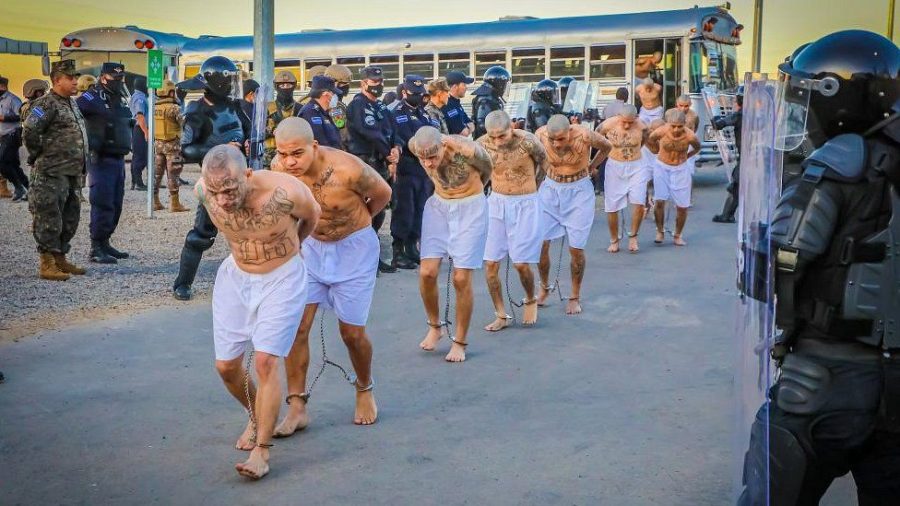El Salvador wages war on gang violence
Inmates march in their standard uniforms of white shorts. The bare torsos expose their gang tattoos.
April 27, 2023
Just South-East of San Vicente Volcano in El Salvador, the largest prison in the Americas stands. Mega Carcel de El Salvador, The El Salvador Mega Prison, or the Terrorism Confinement Center, no matter what you call it, it’s a massive prison. Its total capacity? 40,000 inmates. Eight buildings, 32 cells each, 100 prisoners per cell. Because of these conditions, human rights groups are concerned that it may be in violation, and for good reason. In each cell, there are only two sinks and two toilets. Tamara Taraciuk Broner, Human Rights Watch’s acting director for the Americas, spoke to As It Happens host Nil Köksal. A snippet of their conversation follows:
“When I saw those images, I thought they were a very vivid reflection of President Bukele’s punitive public security policies that include, you know, an 11-month long state of exception, the detention of more than 64,000 people. Many of them were tortured in detention [and] arbitrarily arrested.” (cbc.ca)
The president’s motivation for building this prison is to control the gang violence in El Salvador. In 2015 El Salvador had the highest crime rate in the world, at 83.01%, according to macrotrends.net. Since then, the crime rate has steadily fallen thanks to several government reforms and crackdowns. However, these have come at a cost to human rights. The incarceration of all inmates in the Terrorism Confinement Center has been sped up drastically due to the withholding of due process and the justice system. Despite the human rights violations, it appears that President Bukele plans to continue mass incarceration until gangs no longer pose a threat to El Salvador.



